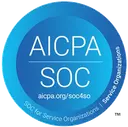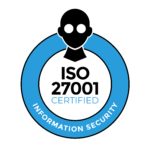NIST SP 800-172 represents an escalation in cybersecurity requirements for organizations handling the most sensitive government information. This standard establishes enhanced security controls that go beyond the baseline requirements of NIST 800-171, specifically targeting threats from advanced persistent threat (APT) actors and nation-state adversaries.
What NIST 800-172 is
NIST Special Publication 800-172 originates from the National Institute of Standards and Technology and was published in February 2021. The standard serves as a supplement to NIST 800-171, providing enhanced security requirements for protecting Controlled Unclassified Information (CUI) when that information is associated with critical programs or high-value assets.
The publication emerged from recognition that sophisticated adversaries, particularly nation-state actors, pose elevated risks to certain types of sensitive information. While NIST 800-171 provides adequate protection for most CUI scenarios, 800-172 addresses situations where standard protections may be insufficient against advanced threats.
Core requirements and principles
NIST 800-172 builds upon the 110 security requirements in NIST 800-171 by adding enhanced controls across multiple security domains. These enhanced requirements focus on:
Advanced threat protection: Controls specifically designed to detect and mitigate sophisticated attack techniques used by APT groups, including enhanced monitoring capabilities and behavioral analysis.
Enhanced access controls: Strengthened authentication and authorization mechanisms that go beyond basic multi-factor authentication to include risk-based authentication and continuous verification.
Improved system integrity: Advanced techniques for ensuring system and data integrity, including enhanced configuration management and system monitoring capabilities.
Sophisticated incident response: Enhanced detection, response, and recovery capabilities that assume breach scenarios and focus on minimizing dwell time and lateral movement.
Supply chain risk management: Comprehensive controls for managing risks throughout the technology supply chain, including vendor assessment and supply chain mapping.
The enhanced requirements operate on a principle of "assumed breach," meaning they're designed to function effectively even when attackers have already gained initial access to systems.
Types and categories
Unlike NIST 800-171, which applies broadly to all CUI-handling systems, NIST 800-172 implementation follows a more targeted approach:
Critical programs: Organizations supporting the Department of Defense or other federal programs deemed critical to national security may be required to implement 800-172 controls.
High-value assets: Systems processing CUI associated with high-value assets—such as advanced weapons systems, critical infrastructure, or sensitive research and development programs—fall under enhanced requirements.
Risk-based application: Rather than universal application, agencies determine 800-172 applicability based on threat assessments, information sensitivity, and program criticality.
The standard doesn't establish maturity levels like some other frameworks but instead provides a comprehensive set of enhanced controls that supplement the base 800-171 requirements.
Compliance process
Achieving NIST 800-172 compliance requires a systematic approach that builds upon existing 800-171 implementations:
Gap assessment: You must first evaluate your current security posture against enhanced requirements, identifying areas where additional controls are needed.
Enhanced system security plan development: Your existing System Security Plan must be updated to address enhanced requirements, including detailed implementation approaches for new controls.
Implementation phase: You'll deploy additional security technologies, processes, and procedures required by enhanced controls, often requiring significant infrastructure investments.
Assessment and authorization: Federal agencies or their designated representatives assess implementation effectiveness, typically requiring more rigorous testing than standard 800-171 assessments.
Continuous monitoring: Enhanced monitoring requirements mandate ongoing surveillance and reporting capabilities that exceed standard compliance monitoring.
The timeline for implementation typically ranges from 12-24 months, depending on organizational complexity and current security maturity. Key roles include designated cybersecurity teams, senior leadership oversight, and often external consulting support for specialized requirements.
Common challenges
Organizations frequently encounter several obstacles when implementing NIST 800-172 requirements:
Cost and complexity: Enhanced requirements often necessitate significant investments in advanced security technologies, specialized personnel, and infrastructure upgrades that can strain organizational budgets.
Technical expertise gap: Many enhanced controls require specialized cybersecurity expertise that smaller organizations may lack internally, necessitating expensive consulting relationships or new hiring.
Integration difficulties: Implementing enhanced monitoring and analysis capabilities while maintaining operational efficiency presents ongoing challenges, particularly for organizations with legacy systems.
Vendor limitations: Some enhanced requirements may exceed the capabilities of existing technology vendors, requiring organizations to source specialized solutions or develop custom capabilities.
These challenges often stem from the advanced nature of the requirements, which assume organizations have both the financial resources and technical sophistication to implement enterprise-grade security controls.
Benefits of compliance
Despite implementation challenges, NIST 800-172 compliance provides substantial advantages:
Enhanced security posture: You gain significantly improved protection against sophisticated threats, reducing the likelihood of successful attacks and data breaches.
Competitive advantage: Compliance opens access to higher-value government contracts and critical programs that require enhanced security measures.
Improved risk management: Enhanced monitoring and analysis capabilities provide better visibility into security risks across your organization.
Customer confidence: Demonstrated capability to protect highly sensitive information builds trust with government customers and partners.
Operational resilience: Advanced incident response and recovery capabilities improve your ability to maintain operations during security events.
Who needs it and when
NIST 800-172 requirements apply to specific organizational categories:
Defense contractors: Prime contractors and subcontractors supporting critical defense programs may be required to implement enhanced controls through contract requirements.
Critical infrastructure partners: Organizations providing services or technologies to critical infrastructure sectors may face enhanced requirements.
Research and development organizations: Entities conducting sensitive research for federal agencies, particularly in areas related to national security.
High-value asset custodians: Organizations processing, storing, or transmitting CUI associated with systems or capabilities deemed high-value assets.
The timing of implementation typically aligns with contract requirements or federal agency determinations of program criticality.
Preparation tips
Getting ahead of SP 800-172 can save time, reduce cost, and avoid audit surprises.
Start with classification. Identify where CUI resides—and which systems touch it.
Build a system map. Clarify trusted connections, service dependencies, and network segments.
Benchmark against SP 800-171. If 800-171 isn’t fully implemented, you’ll need that baseline in place before layering on 800-172 enhancements.
Assess likely enhancements. Review the 800-172 control families and prioritize based on what your agency customer has required in similar engagements.
Gather operational evidence. Logging, configuration snapshots, exercise results, and access audits should be aligned to your SSP.
Remediate high-risk gaps. Focus first on controls that reduce exposure to credential theft, lateral movement, and spyware implantations—key APT tactics.
Use 800-172A for planning. The assessment guide shows evidence types, test methods, and acceptance criteria to help you align preparation with evaluation goals.
Conclusion
NIST SP 800-172 reinforces federal assurance that critical systems handling CUI can withstand persistent, high-consequence threats. While not universally required, it becomes mandatory when federal partners determine the risk level or mission sensitivity justifies this added layer of protection.
For organizations operating in the federal space, early preparation, accurate scoping, and strong SSP documentation are essential. Compliance signals operational security, contract readiness, and business continuity in the face of modern threat landscapes.
Preparing today ensures you're ready when the next opportunity—or assessment—arrives.

Related Posts
Stay connected
Subscribe to receive new blog articles and updates from Thoropass in your inbox.
Want to join our team?
Help Thoropass ensure that compliance never gets in the way of innovation.












.png)